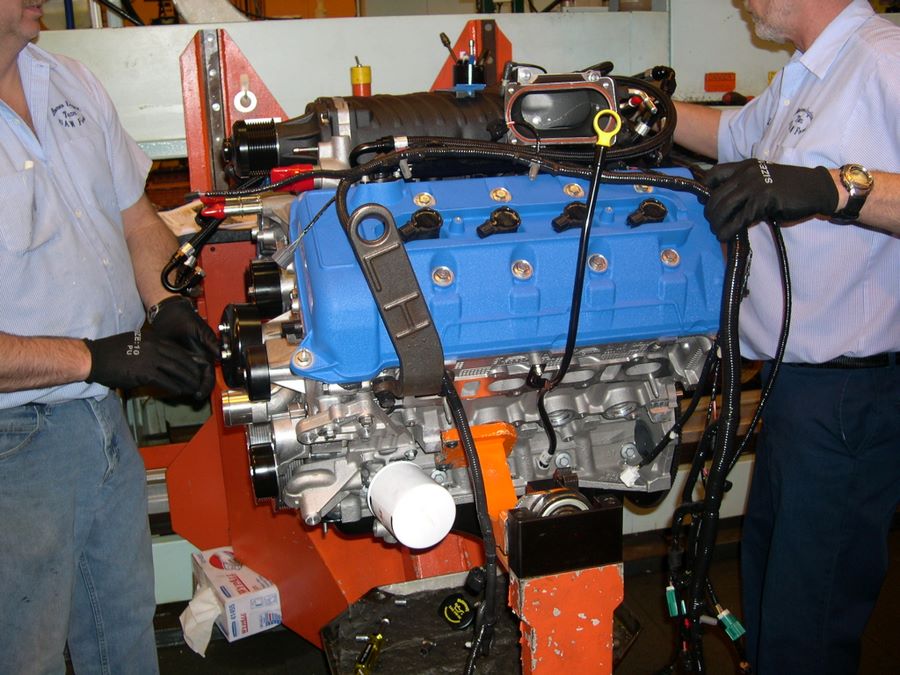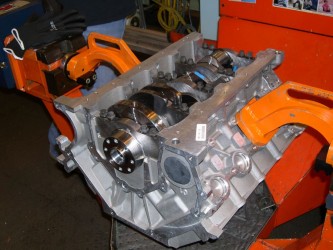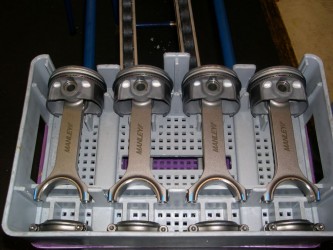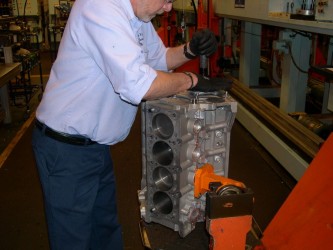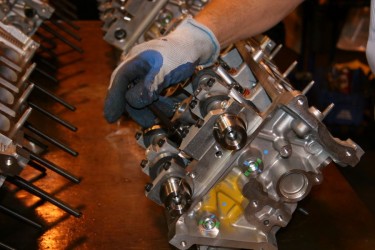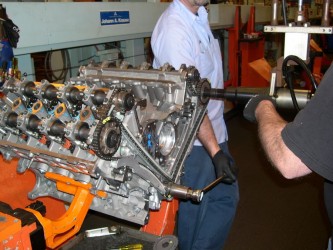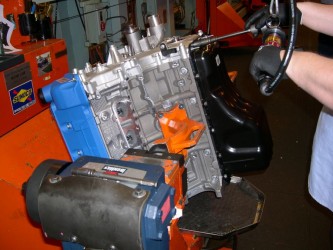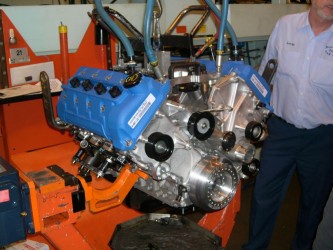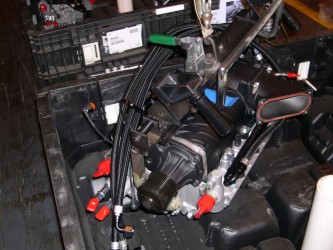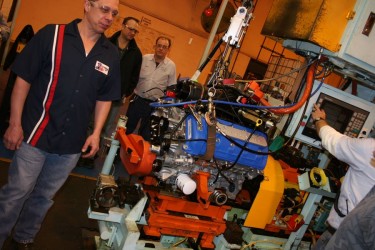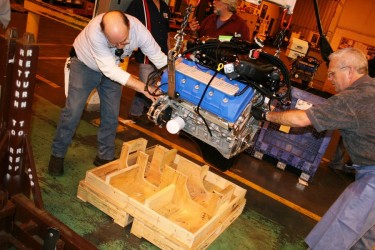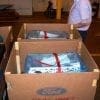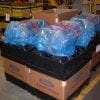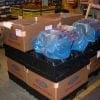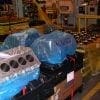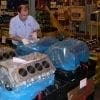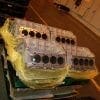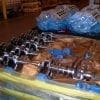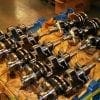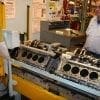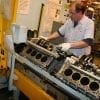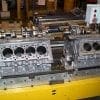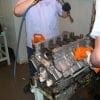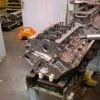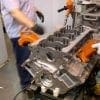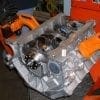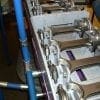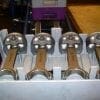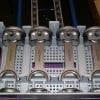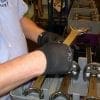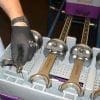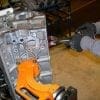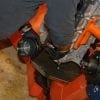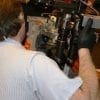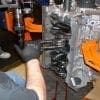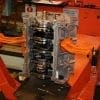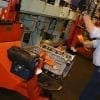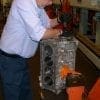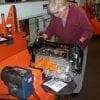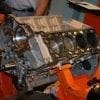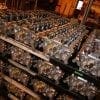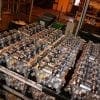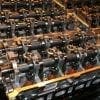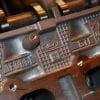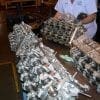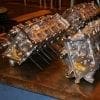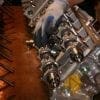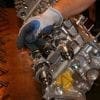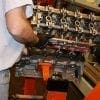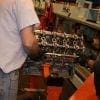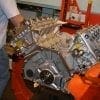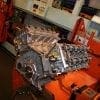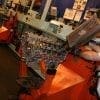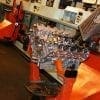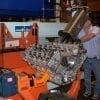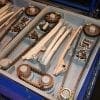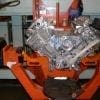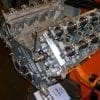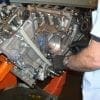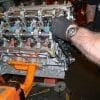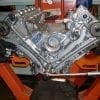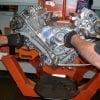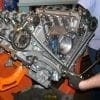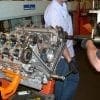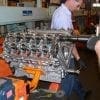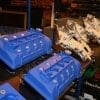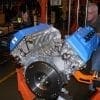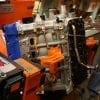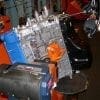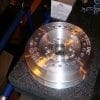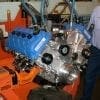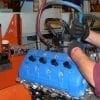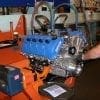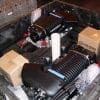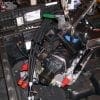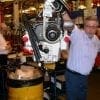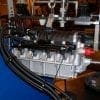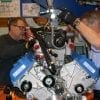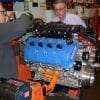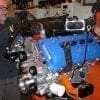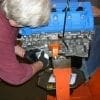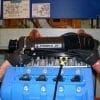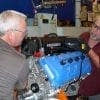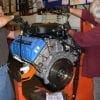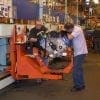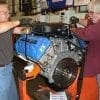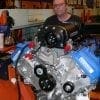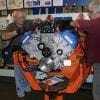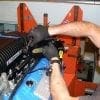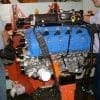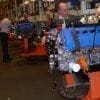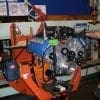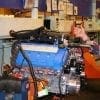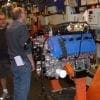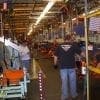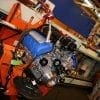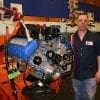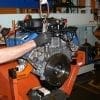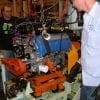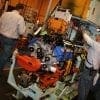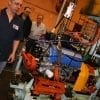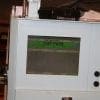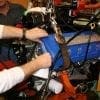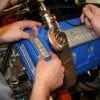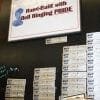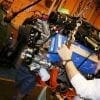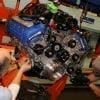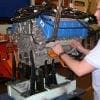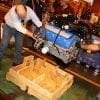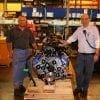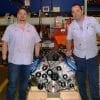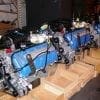Ford Racing was kind enough to give us an inside look at how the 2012 Mustang Cobra Jet engine is built, complete with a play-by-play of each station. The all-aluminum 5.4-liter V8 is hand built at the Romeo engine plant in Michigan. Check out the complete build process below along with over 100 photos.
Ford Racing Cobra Jet Engine Build Process:
With 2012 Cobra Jet production starting in only a few weeks, we take you behind the scenes of the engine build necessary to begin vehicle production.
The Romeo Niche line began in 1996 to provide a production source for flagship engines like those found in the SVT Cobra and Ford GT, in 2008 it added Cobra Jet engines to its build portfolio. While a typical Ford engine assembly line produces one engine every few minutes, the Niche line’s ten station process produces approximately one engine every two hours with assembly being handled by two worker teams whose names are applied to every engine they build.
All 2012 Cobra Jet engines start with a 5.4 Liter aluminum block sourced from the Ford Racing catalog (Part # M-6010-GTWS or M-6010-M54A). To begin the build, the block is paired with a crankshaft and run through a high-tech washing machine then quickly dried with a combination of compressed air and vacuum lines.
Once washed and dried, the block is fitted with its dedicated carrier mounts that use the engine’s motor mount attachment points. The carrier is used to rotate the work-in-process engine 360-degrees and move the engine from build station to build station.
Station One: Block Prep and Crank Install
The main-cap bolts are loosened and the main caps removed so the main bearings and crank can be installed. The Cobra Jet uses a double-keyed steel crank that is similar to the units installed in the 2011 GT500.
Before leaving station one, the main caps are torqued down with a computer controlled torque wrench. Most of the power torque wrenches on the Niche Line are electric, and they’re calibrated by a computer program that ensures the fasteners receive the proper torque.
Station Two: Pistons and Connecting Rods
The Cobra Jet forged pistons and piston rings are sourced from Mahle and the H-beam steel connecting rods come from Manley. Each engine has a two person build team that works in tandem on each engine during the build process.
For piston installation, one team member uses a piston tool to collapse the rings while the other member uses a guide to direct the connecting rod big-end over the crank throw. Once the piston and rod assembly is aligned, a piston installation tool is used to knock the piston into the bore.
Once seated, the piston cap and rod bolts are installed. When all eight pistons/rods are installed on the crank, the piston cap bolts are torqued with a computerized torque wrench.
Station Three: Oil Pump and Seals
After the pistons are in place, the front and rear crank seal and oil pump are installed. The high volume gear driven oil pump is driven off the crank and is sourced from the GT500 parts bin.
Station Four: Cylinder Head Prep and Install
With the short block assembled, the Cobra Jet’s DOHC heads are prepped for installation. The heads are similar to the GT500 units but feature Cobra Jet spec cams and valve springs.
They arrive at the Niche line build station preassembled with cams, springs and roller finger followers already installed. While on the prep table, head bolts are placed in the heads before they are set on the engine.
At the head install station, the engine team sets a pair of MLS head gaskets in the engine followed by the left and right cylinder heads. The heads are then torqued in place with a computerized overhead torque gun.
Station Five: Timing Set Installation
The timing set arrives pre-kitted from the suppler and includes all gears, chains, guides and tensioners needed to run four cams.
The build team member aligns the timing set to the appropriate marks on the chain and tightens the bolts before releasing the tensioners. All tensioner pins are saved with the engine build sheet as a quality control process.
Station Six: Front Cover, Cam Covers and Oil Pan
The front engine cover is installed followed by the trademark Ford blue DOHC cam covers.
With the front cover and heads sealed, the build team seals up the bottom of the engine with the installation of the oil pump pick-up tube and oil pan with integral windage tray.
Station Seven: Balancer and Leak Test
The Cobra Jet engine uses a harmonic balancer from Innovators West, Inc. The billet aluminum unit is SFI approved and legal in NHRA Stock and Super Stock.
Once the engine is sealed, the exhaust ports and intake ports are sealed off and air is pumped into the engine to test for leaks. Once the leak test is passed, the engine is ready for its supercharger installation.
Station Eight: Supercharger Install
Base 5.4L Cobra Jet engines are topped off with a 2.3 liter TVS supercharger unit and Super Cobra Jet engines feature a 4.0L Ford Racing/Whipple unit. The superchargers arrive at the NICHE line preassembled in a unit known as the “Charge-Air assembly” with intercooler, fuel injectors and fuel lines already in place.
The build team mounts the “charge-air assembly” to the engine and torques the intake manifold bolts. Spark plugs and coil packs are installed in each cylinder in preparation for the cold fire test. The final step in the intake station is to fill the engine with Motorcraft Oil, install the throttle body, coolant tubing and vacuum lines.
The build team tops the Cobra Jet off with a unique engine wiring harness that adds specific wires for dash mounted Ford Racing gauges and saves weight by eliminating any unnecessary wiring found on a stock GT500 harness.
Station Nine: Cold Fire Test
Once the Cobra Jet engine is complete, the build team hoists the engine off the line to a cold test station for a cold test run. The test stand spins the engine up to a predetermined RPM and engine functions like oil pressure and vacuum are monitored. The engine’s flywheel is attached to the stand, the injectors fire, the plugs fire, and the throttle body opens, as if the engine were running.
The Aeromotive fuel system is checked for leaks using pressurized air, which shows leaks much easier than fluid would.
After passing cold test, the two man team places the Niche line build signature plate. This signature plate has been used since 1996 when the build line started with the SVT program. In the early days of the Niche line, the build team signed the signature plates that were attached to the cam covers. To speed up the process and make a more permanent badge, the signatures are now pressed into the plates prior to installation.
Station Ten: Final FEAD Assembly and Packaging
Once the engine passes the cold test, it’s placed back on the moving carrier for final FEAD assembly and crating. At the FEAD installation station, the alternator and A/C eliminator pulley is installed followed by the FEAD drive belt.
Once the engine is complete, the assembly is placed in a custom wood crate in preparation for the trip south to Flat Rock Michigan.
Team members of the Romeo Niche line stand proudly around one of the completed 2010 Cobra Jet Mustangs. The 2008, 2010 and 2012 Cobra Jet programs would not have been possible without their efforts combined with the final assembly of the car by the team members at AAI assembly.
Gallery of Build Photos Below:
Source: Ford Racing


